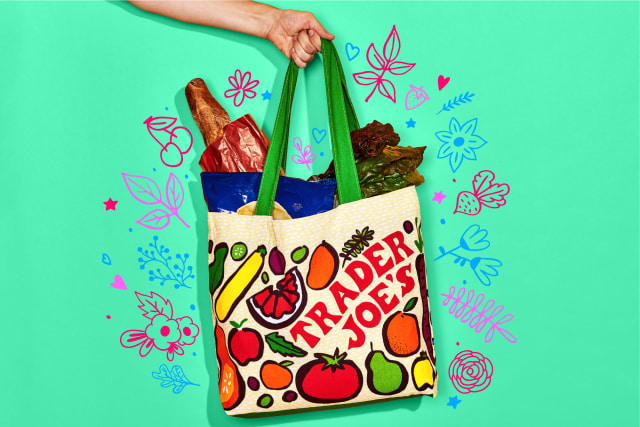This
post was originally published on
this sitehttp://chriskresser.com/

Fortunately, a root-cause approach and the right nutritional strategy can help to slow or even reverse the progression of autoimmune disease. Read on to learn what the research says, the connection between diet and autoimmune disease, and how to determine the most effective dietary approach for you.
What’s the Connection between Diet and Autoimmune Disease?
Autoimmune disease—when the body essentially attacks itself—is one of the top 10 causes of death in women and the elderly and now affects one in 10 people worldwide. This trend does not appear to be slowing down; in fact, the prevalence of autoimmune diseases like type 1 diabetes, inflammatory bowel disease, and multiple sclerosis (MS) is increasing at an alarming pace. (1)
Conventional treatment of autoimmune disease usually involves steroids and other immunosuppressive drugs. These drugs do nothing to fix the underlying autoimmunity and are accompanied by a long list of potential adverse effects, including: (2, 3)
- Weight gain
- Acne
- Mood changes
- Muscle weakness
- Osteoporosis
- Diabetes
- High blood pressure
- An increased risk of infection
A Functional Medicine approach to autoimmune disease, on the other hand, seeks to identify why autoimmunity is occurring in the first place and address these underlying causes. A crucial piece of this treatment approach is finding the right diet.
In this article, I’ll lay out six different nutritional approaches for autoimmune disease and then provide an easy step-by-step guide to figuring out which works best for you.
Six Diet Plans for Autoimmune Disease
- Basic Paleo Diet
- Wahls Protocol
- Low-Starch Diet
- Low-Carb or Ketogenic Diet
- Autoimmune Protocol (AIP) Diet
- Fasting Mimicking Diet
Option #1: Adopt a Basic Paleo Diet
Take Out Inflammatory and Gut-Damaging Foods
A great starting place for many patients with autoimmune disease is simply a basic Paleo diet. This approach removes foods that have the most potential to be inflammatory and cause damage to the gut. Food sensitivities are common among those with autoimmune disease, and pioneering researcher Dr. Alessio Fasano believes that intestinal permeability, or “leaky gut,” is a prerequisite to developing autoimmune disease. (4) Healing the gut and supporting a healthy gut microbiota is, therefore, a crucial part of treating autoimmune disease.
Nourish Your Body with Nutrient-Dense Foods
We replace these highly inflammatory foods with foods that will nourish the body. The term “nutrient density” refers to the concentration and bioavailability of micronutrients and amino acids, the building blocks of proteins, in a given food.
The most nutrient-dense foods for humans are:
- Organ meats
- Shellfish
- Fish
- Eggs
- Poultry
- Red meat
- Vegetables
- Fruits
- Nuts and seeds
Despite being high in calories, the Standard American Diet (SAD) is extremely nutrient poor. Vegetable oils and sugar, which together comprise 36 percent of the SAD, are virtually devoid of nutrients, and most Americans eat few organ meats, shellfish, and vegetables. In contrast, the Paleo diet encompasses all of these nutrient-dense foods.
Follow the Example of Hunter–Gatherers (They Don’t Have Autoimmune Disease)
While autoimmune disease has become commonplace in the industrialized world, anthropological evidence suggests that it’s rare or nonexistent in contemporary hunter–gatherers living a traditional lifestyle. (5) This, along with the dramatic rise in autoimmune disease over the past half century, suggests that environmental factors like diet and lifestyle play a major role in autoimmunity. (6)
By consuming a diet that is more aligned with our biology and contains fewer inflammatory foods, we can often see remarkable improvements in slowing the progression of or even reversing autoimmune disease.
Here’s How to Try a Paleo Diet
I recommend a 30-day Paleo reset, which involves eliminating grains, legumes, industrial seed oils, refined sugar, and processed foods for 30 days. Instead, you’ll consume meat and organ meats, fish, shellfish, healthy fats, and vegetables, along with some fruits, nuts, and seeds. This is outlined in detail in my book The Paleo Cure.
While a basic Paleo diet is a great starting place, many people with autoimmune disease will need to take their diet a step further after their 30-day reset. The next few sections include more advanced strategies to tweak your Paleo template.
Further Reading and Resources
Back to Top
Option #2: Improve Your Mitochondrial Health with the Wahls Protocol
Who Is Dr. Wahls, and What Is the Wahls Protocol?
The next option is the Wahls protocol. This is a modified version of the Paleo diet created by Dr. Terry Wahls, a physician who has made remarkable progress with her MS using a Functional Medicine approach. When Dr. Wahls was diagnosed with MS in 2000, she was told by the very best conventional doctors that there was no cure and that she should start pharmaceutical treatment. Unfortunately, her disease progressed to the point where she needed a tilt and recline wheelchair to get around.
Dr. Wahls started reading the research literature and zeroed in on mitochondrial health as a key player in conditions like MS. She identified a long list of nutrients that she believed were the key to optimal mitochondrial and neurological health. She ultimately realized that she didn’t have to get these in supplement form and reorganized her diet using Paleo principles, specifically targeting these 31 nutrients:
It occurred to me that I should get my long list of nutrients from food [rather than supplements]. That if I did that, I would probably get hundreds and maybe thousands of other compounds that science had yet to name and identify, but that would be helpful to my brain and my mitochondria. – Dr. Terry Wahls, MD
In addition to changing her diet, Dr. Wahls also optimized other aspects of her lifestyle and saw a dramatic improvement in her health. Within three months, Dr. Wahls was walking with a cane, and within the year, she was able to bike again for the first time in five years.
Why Mitochondrial Health Is So Important
Mitochondria are the cell’s energy producers, converting carbohydrates and fats that we consume into the energy our cells need (ATP) to perform all of their jobs. Every cell in the body contains mitochondria, and some cells contain thousands of them. Altogether, a healthy person’s mitochondria will produce their body weight in cellular ATP every day. (7)
Mitochondria are much more than just the “powerhouse” of the cell though. These critical organelles also participate in cell signaling, produce certain steroid hormones, participate in the synthesis of heme for the transport of oxygen throughout the body, and even regulate programmed cell death. (8)
When mitochondria become dysfunctional, our cells have trouble carrying out these important functions. Mild mitochondrial dysfunction can result in fatigue and brain fog, while severe mitochondrial dysfunction plays a role in a wide range of chronic conditions, including several autoimmune diseases. (9) Mitochondria are especially susceptible to nutrient deficiencies.
How to Try the Wahls Protocol
To maximize nutrient intake and mitochondrial function, the Wahls protocol features nine cups of vegetables and fruits daily, including:
- Three cups of leafy green vegetables, such as chard, kale, collards, spinach, or lettuce, to provide vitamins A, B, C, and K
- Three cups of sulfur-rich vegetables, such as broccoli, cauliflower, cabbage, onion, garlic, asparagus, and mushrooms to support detoxification. (Note that two garlic cloves are equivalent to one cup of sulfur-rich vegetables.)
- Three cups of colorful fruits and vegetables (ideally three different colors per day), such as beets, carrots, berries, peaches, and citrus for their antioxidants and flavonoids.
Even if you can’t get the full nine cups, increasing your intake of fruits and vegetables will likely significantly increase your intake of crucial micronutrients.
For maximum nutrient retention, Dr. Wahls recommends consuming the vegetables either raw or cooked at a low temperature. Depending on which level of the Wahls diet you choose, the nutrient density of this protocol can exceed the recommended daily allowance (RDA) two- to tenfold!
Along with all those fruits and veggies, Dr. Wahls recommends grass-fed meat or wild-caught fish and healthy fats with every meal, as well as bone broth and fermented foods daily. Seaweed and organ meats should be included once per week. The Wahls protocol also includes meditation, self-massage, exercise, and neuromuscular electrical stimulation.
What the Research Says about the Wahls Protocol
The Wahls Foundation has performed several studies to provide evidence for this approach. In one pilot study of 20 patients with progressive MS, the Wahls protocol (including the Wahls diet, nutritional supplements, stretching and strengthening exercises, and stress management) was shown to improve gait function for those with mild-to-moderate gait impairment. Subjects with severe gait impairment did not respond to the intervention. (10)
In another pilot study of 17 individuals with relapsing-remitting MS, the Wahls protocol reduced perceived fatigue, increased mental and physical quality of life, increased exercise capacity, and improved hand and leg function. (11) Dr. Wahls and her research team are currently working on a 36-week randomized controlled trial to test the Wahls diet against a low-saturated-fat diet in patients with relapsing-remitting MS. (12)
Further Reading and Resources
Back to Top
Option #3: Try Eating a Low-Starch Diet
What Is Starch, Anyway?
Starch is how plants store excess energy, in the form of a long chain of sugars. The basic Paleo diet outlined in Option #1 removes some forms of starch, including grains and legumes. However, starch is also found in certain vegetables, including:
- Sweet potatoes
- Yuca (cassava)
- Parsnips
- Arrowroot
- Tapioca
- Taro
- Plantains
- Unripe bananas
While starch can be perfectly healthy, and starchy vegetables can help beneficial gut bacteria, some individuals may experience issues with starch.
These individuals may do best on a low-starch diet, which eliminates these complex carbohydrates while still allowing non-starchy vegetables like cauliflower, asparagus, and greens.
Why Low-Starch Might Work: HLA-B27 and Klebsiella
One subset of people with autoimmune disease who might particularly benefit from a low-starch diet are those who have a particular set of genes known as HLA-B27. HLA-B27 can predispose an individual to certain autoimmune diseases, like: (13, 14)
- Ankylosing spondylitis (AS)
- Crohn’s disease
- Ulcerative colitis
- Psoriasis
- Reactive arthritis
- Uveitis
Studies have shown that patients with AS seem to have an increased abundance of the bacterium Klebsiella in their guts and elevated anti-Klebsiella antibodies in the blood. (15, 16) Interestingly, biochemical studies of Klebsiella have shown that this bacterium does not grow on cellulose but can grow readily on starch. (17, 18)
Several studies have applied this information in humans. One randomized control trial split people into two groups: one on a high-carbohydrate, low-protein diet and the other on a low-carbohydrate, high-protein diet. They then compared the abundance of Klebsiella in fecal samples. The average number of Klebsiella was 30,000/gram in the high-carb group, compared to 700/gram in the low-carb group. (19) Another study found that a low-starch diet reduced total serum IgA in AS patients. (20) The majority of these patients also reported a decline in symptom severity and in some cases complete remission.
How to Try a Low-Starch Diet
If you’re already on a Paleo diet template, going low starch is pretty simple. Remove starchy vegetables like sweet potatoes, yuca, arrowroot, tapioca, parsnips, taro, and plantains, and replace them with more fruits and non-starchy vegetables like greens, broccoli, cauliflower, asparagus, and onions.
I recommend a three-to-four-week low-starch period to see if you notice any improvement in symptoms. After this period, try reintroducing starchy foods one by one and note any reactions. Eileen Laird of Phoenix Helix has written an excellent post in which she shares the results of her own and several other Paleo autoimmune bloggers’ starch experiments. Many found that they can tolerate some forms of starch but not others.
It’s worth noting here that the popularized GAPS Diet and the Specific Carbohydrate Diet (SCD) are both low-starch diets. Many people have used these diets with great success for gut health and autoimmune disease.
Further Reading and Resources
Back to Top
Option #4: Go Low Carb, or Ketogenic
The Keto Diet and Autoimmune Disease
Some individuals may benefit from an approach that limits carbohydrates in general. Unfortunately, few studies have looked at very-low-carb, or ketogenic, diets as a therapeutic strategy for autoimmune disease.
However, one case report found that a Paleolithic, ketogenic diet induced clinical remission in a young boy suffering from severe Crohn’s disease. (21) Another case report details a 19-year-old male with newly diagnosed type 1 diabetes who was able to discontinue insulin therapy after just three weeks on a Paleolithic, ketogenic diet. (22) One woman with psoriasis reportedly restored response to drug therapy after a four-week ketogenic diet. (23)
Why a Ketogenic Diet Might Work for You
Ketogenic diets tend to
reduce oxidative stress and boost antioxidant activity, resulting in a net decrease in inflammation. The ketogenic diet has also been shown to increase the formation of new mitochondria, spurring new cell growth. (
24)
Low-carb, high-fat diets also have a significant impact on the composition of the gut microbiota. (25) One recent study suggests that the neuroprotective effects of a ketogenic diet are actually mediated by changes in gut bacteria. (26) In particular, the ketogenic diet increases bacterial production of amino acids that act as a precursor to the calming neurotransmitter GABA.
If You Have a Thyroid Condition, Steer Clear of Keto
It’s important to note that not everyone with autoimmune disease will benefit from a ketogenic approach, and it may even be detrimental in some individuals. Based on what we know from the research, a ketogenic diet is most likely to be helpful in those with autoimmune neurological conditions like MS and metabolic conditions like type 1 diabetes. On the other hand, those with thyroid conditions like Hashimoto’s or Graves’ disease would likely respond better to a more moderate carbohydrate intake.
Further Reading and Resources
Back to Top
Option #5: Try the Autoimmune Protocol (AIP) Diet
What Is the AIP Diet?
The Paleo autoimmune protocol (AIP) diet is a Paleo-type diet which removes grains, legumes, dairy, refined seed oils, and refined sugar but also recommends initial removal of eggs, nightshades, coffee, alcohol, nuts, and seeds.
While these foods are perfectly healthy in most people, those with autoimmune disease can be particularly sensitive, and these foods may exacerbate gut inflammation and immune dysregulation.
Like Paleo, AIP encourages consumption of nutrient-dense, healing foods, including bone broth, organ meats, and fermented foods. The elimination phase is typically followed by a maintenance phase until sufficient improvement in symptoms is achieved. At that point, select food groups can be carefully reintroduced. The goal is to diversify the diet as much as possible while identifying potential food intolerances.
AIP May Help if You Have IBD
One pilot study recently demonstrated the incredible potential of the AIP diet for treating inflammatory bowel disease (IBD). (27) Fifteen patients with IBD were coached through a six-week phased elimination program to transition from their current diet to AIP and then maintained on the full AIP diet for five weeks. The authors summarized their results as follows:
Clinical remission was achieved by week 6 by 11/15 (73%) of study participants, and all 11 maintained clinical remission during the maintenance phase of the study.
This is remarkable and rivals most drug therapies for IBD. Moreover, the AIP diet is treating the root cause of disease and doesn’t have any of the nasty side effects of conventional treatments.
Angie Alt and Mickey Trescott, who were involved with this study, are currently working on another study to assess the efficacy of AIP in individuals with Hashimoto’s.
How to Try the AIP Diet
After a 30-day Paleo reset, remove eggs, nightshade vegetables (tomatoes, bell peppers, eggplant, potatoes, etc.), nuts, and seeds for an additional five or six weeks. Notice any reduction in symptoms of your autoimmune condition.
After the five or six weeks, you can slowly reintroduce these foods one at a time and note any adverse reactions. If you identify a food sensitivity, remove this food from your diet for at least a few months before trying to reintroduce it again.
Further Reading and Resources
Back to Top
Option #6: Try a Fasting Mimicking Diet
The Benefits of Fasting
Water-only fasting provides many health benefits, including blood glucose regulation, regeneration of the immune system, and cellular maintenance. (28) But prolonged fasting is difficult for most people and can cause adverse effects on physical and mental health due to its extreme nature. Researchers have therefore been attempting to design diets that mimic the physiological benefits of prolonged fasting without the burden of complete food restriction.
This type of diet is called a fasting mimicking diet. It is a very-low-calorie, low-protein, high-fat diet that causes changes in glucose, ketone bodies, and specific growth factors similar to those seen during prolonged water-only fasting.
The fasting mimicking diet is characterized by cycles of caloric restriction and refeeding. For example, in mouse models of fasting mimicking diets, researchers restrict the amount of food the mouse has access to for four days, followed by three days of unrestricted feeding every week. In humans, one diet cycle consists of five days of restriction, and eating resumes as usual for the rest of the month. This is typically repeated for three months. (29)
How This Type of Diet Impacts Autoimmunity
In a study published in the journal Cell, researchers showed that in a mouse model of type 1 diabetes, a fasting mimicking diet reawakens embryonic development genes and triggers regeneration of pancreatic beta cells. (30) While they weren’t able to measure pancreatic regeneration in living humans, bathing human pancreatic islets from type 1 diabetics in serum collected from humans on the fifth day of a fasting mimicking diet also resulted in an upregulation of embryonic genes. Upon stimulating the diabetic pancreatic islets with glucose, insulin secretion was restored!
In a mouse model of MS, a fasting mimicking diet reduced clinical severity in all mice and completely reversed symptoms in 20 percent of animals. (31) At the molecular level, the diet increased corticosterone levels and regulatory T cells and promoted the regrowth of nerve cell sheaths. Fasting mimicking diets also reduced levels of pro-inflammatory cytokines and immune cells involved in promoting inflammation. In a small feasibility study, relapsing-remitting MS patients had improved quality of life and a mild reduction in disability status after a single cycle of this diet. (32)
Will You Benefit from a Fasting Mimicking Diet?
Those who have tried other dietary approaches without success may find the most benefit from trying a fasting mimicking diet. The diet, as studied, is currently available from Prolon as a specific package of prepared foods and micronutrients intended to be administered under a doctor’s supervision. It’s likely that a “homemade” version with similar macronutrient ratios and foods would have the same effects, but this hasn’t yet been studied in a clinical trial.
Not everyone is a good candidate for a fasting mimicking diet, however. Patients who should avoid this type of diet include those who are pregnant or have HPA axis dysregulation (“adrenal fatigue”), an eating disorder, or thyroid problems. Fasting is also not usually recommended for children or teens.
Further Reading and Resources
Back to Top
Here’s How to Personalize Your Autoimmune Diet
In this article, I presented six different dietary strategies to manage or even reverse autoimmune disease. You might have noticed that there is quite a bit of overlap in these approaches. In fact, the best autoimmune diet for you might be a combination of these strategies.
The only way to figure out what diet is optimal for you is to experiment and observe. Even two people with the same autoimmune disease diagnosis may respond differently to the various dietary approaches outlined here.
Below, I’ve provided the eight basic steps to work through the options outlined above and find your personal optimal autoimmune diet.
1. Start with a 30-Day Paleo Reset
Remove grains, legumes, dairy, sugar, and refined seed oils for 30 days. Many people experience a significant improvement in their autoimmune symptoms with a standard Paleo diet and don’t need any additional restrictions.
2. Eat Nutrient-Dense Foods
Include plenty of organ meats, shellfish, meat, fish, healthy fats, and vegetables, along with a few fruits, nuts, and seeds.
3. Feed Your Mitochondria
Consider trying the Wahls protocol. Aim for nine cups of fruits and vegetables per day from the three different categories to support mitochondrial health.
4. Eat Foods That Nourish Your Gut
Feed your gut microbiota with starchy or non-starchy vegetables and support a healthy gut lining by consuming bone broth regularly. Be sure to consume fermented foods and/or take a high-quality probiotic supplement.
5. Make Sure You’re Getting the Nutrients Your Immune System Needs
Support the immune system with nutrients like glutathione, selenium, zinc, vitamin D, vitamin A, and EPA and DHA. These are well represented in a Paleo-type diet, but you can also supplement wisely if necessary.
6. Experiment with Your Starch and Carb Intake
Try a few weeks on a low-starch diet and introduce various starchy vegetables one by one, noting how you feel. Similarly, experiment with different carb intakes and notice how they impact your symptoms.
7. Try the 30-Day AIP Reset
Try a 30-day AIP reset and notice how your symptoms are affected. After 30 days, reintroduce the foods you took out, like eggs, nightshades, nuts, and seeds, and diversify the diet as much as possible. Your diet should only be as restrictive as necessary to control symptoms.
8. Try a Fasting Mimicking Diet
If you’re still not satisfied with where you’re at after these first seven steps, consider trying a fasting mimicking diet. I recommend seeking the guidance of a Functional Medicine practitioner before you begin.
Now I’d like to hear from you. Did you know about the connection between diet and autoimmune disease? What have you found to work best for you? Will you try this step-by-step approach? Share your thoughts in the comments.
The post Diet and Autoimmune Disease: What You Need to Know appeared first on Chris Kresser.












 For today’s edition of Dear Mark, I’m answering a few questions from readers. First, the diabetes drug metformin looks like a “wonder” drug, even (or especially) for non-diabetics. Are there any known side effects? Is there anything we should watch out for?
For today’s edition of Dear Mark, I’m answering a few questions from readers. First, the diabetes drug metformin looks like a “wonder” drug, even (or especially) for non-diabetics. Are there any known side effects? Is there anything we should watch out for?






 For now classes are 6pm and 640pm at 2840 Wildwood st in the Boise Cloggers studio.
Book your class NOW!
click this ==>
For now classes are 6pm and 640pm at 2840 Wildwood st in the Boise Cloggers studio.
Book your class NOW!
click this ==>








